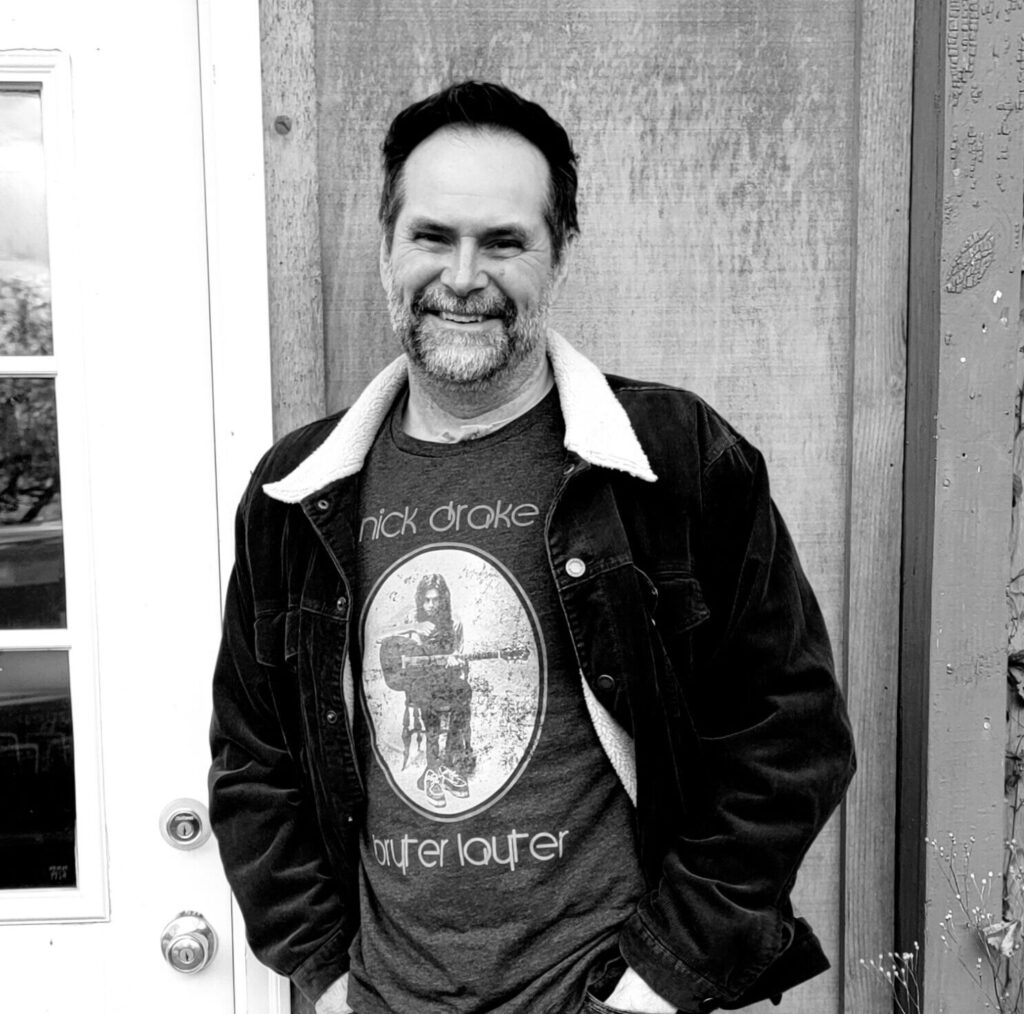
By Edward Karshner
Maybe it was the forty-eight days without sunshine in Northeast Ohio, but I woke up fitful that morning questioning those stories we tell ourselves about the act of love. That was just the intellectual puzzle I needed to pull myself out of my “bleak mid-winter.”
When I was younger, my dad tried to get me into fishing. I enjoyed being outside with him, drinking out of his thermos. Yet, it seemed to me that there was a lot of waiting for little payoff. In graduate school, I found that same sense of patience and intuition in research that Dad found in fishing. The stacks became my fishing hole. My fingers dragging across the dusty spines of books, my fishing line.
I have my favorite fishing holes, like Berea College Special Collections and Archives; however, most of my research starts on my laptop—JSTOR and Project Muse. On that morning, I dropped a line into those deep waters of Google to fish for the folklore metaphors that shape our understanding of the nature of love.
My first bite was the Fabulous Folklore blog article “Roses are Red: The Sinister Side of Valentine’s Day Folklore” by my friend and folklorist Icy Sedgewick. She writes that until 496 CE, the Roman fertility festival Lupercalia was celebrated from February 13-15. During this festival, young, naked men would run through the streets whipping women with animal skins to ensure their fertility. Pope Gelasius reduced the festival to one day, the 14th, to celebrate St. Valentine, a priest executed for performing secret, Christian marriages. If the point of Lupercalia, as Icy writes, was to ensure fertility and ease childbirth, the adoption of Valentine’s story changed how we talk about love. The conflation of “love” as sexuality and fertility through violence with love as self-sacrifice and death transformed love into something painfully endured. Think about our love songs, “Love Hurts” or Prince’s “I Would Die 4 U.” Our narratives about romance create a space shared by love and death.
Emmanuel Levinas writes that death as a metaphor represents an absence of choice, an end of our being “able to able.” This idea of romance as surrender manifests itself in a peculiar love ritual. In Everyday Folklore, Liza Frank recounts a love binding spell that entails digging up a nine-day old corpse, skinning it from head to foot, and then wrapping the “skin ribbon” around the leg of your sweetheart while they sleep. Removing the ribbon before they wake up, you hide it in a secret place. The idea is that through this ritual, “you’ll have their love for as long as you want it.” For as long as you want it. The poor Valentine who slept bound by rotting corpse skin doesn’t have a say in the ritual or the outcome. Love, as a metaphor, is narrated as a willingness to suffer as we submit to the will of another. Romance, as a sneaky act of coercive self-interest, creates an opportunity for our Valentine to forfeit their ability to choose for themselves. Love becomes a perplexing tragedy found between the extremes of selflessness and selfishness.
But what if there was another story?
In Berea College Special Collection and Archives’ Leonard Robert Collection, there’s a story offering a different narrative and, therefore, metaphor for the nature of love. The story, called “The Young and the Old,” begins with a mysterious old man who lives alone. Fear turns to curiosity about the old man, and, finally, someone watches his house and discovers he is a witch. Every night at 9pm, he turns into a handsome young man and drives around in his pristine, but vintage car. Then, at 1am, he turns back into an old man.
One night, while cruising, the witch finds an injured young woman in the road. He takes her home to care for her. Being late, he begins to turn back into an old man and, to his surprise, she changes into an old woman. Delighted to have found each other, they spend the night talking and decide to get married. Every night, at 9pm, they go out for a drive but are sure to be home by 1am.
For me, the most interesting detail in this story is that the romantic pair are witches. Witches, in Appalachian folklore, often represent a disruption to a stagnant social system. “The Young and the Old” counters the idea of love as being based on self-sacrifice, martyrdom, romantic violence, and victims, stressing, instead, an acknowledgement and acceptance of change in another. When the man realizes the woman is like him, he feels “lucky.” When the woman recognizes the man’s transformation, she is “glad that [they] had met.” When love becomes a metaphor for the inevitability of change, romance reflects folklorist Robert Kirk’s idea that not only does nothing ever truly die, but all things are evolving to be renewed and improved. Romance is sharing not only the inevitability of growing old together, but the joy of growing young together, too.
My academic day job is the study of how folklore informs the stories we’re told, the stories we tell, and the stories we live. In my writing, I fish these folktales for metaphors that become plot points in my stories that, I hope, offer a new way of thinking about what we’ve taken for granted. If nothing else, this exercise in fishing and pondering reminds me that I have, in me, the time and place to make my own meaning.
Since that cold January morning when I woke up uncertain about the nature of love, I’ve thought maybe it’s time for a new story about a how a witchery of love celebrates a renewal that is antithetical to Valentine’s love as death. A story that reminds us that if we don’t accept ourselves as beings in motion and love who we are trying to become first, there is no one to love at all and we are truly alone.
Further Reading:
You can read Icy Sedgwick’s wonderful discussion of sinister Valentine lore here. You can also read my Reckon interview with Icy here.
I can’t recommend Liza Frank’s fascinating book Everyday Folklore (Murdoch Book) more highly. I also highly recommend listening to her interview on “The Appalachian Folklore Podcast”. I think Reckon readers will be interested to read about how the book came about.

Edward Karshner
Edward Karshner was born in Ross County, Ohio and grew up in the Salt Creek Valley of Southeast Appalachia Ohio which draws together Ross, Hocking, and Pickaway Counties. After earning a Ph.D. in Rhetoric and Philosophy from Bowling Green State University, he began to explore cultural rhetoric as expressed in folklore. His primary interest was how landscape influences folk-ideologies. In the early part of his career, he travelled extensively in China, Slovakia, Austria, and the Czech Republic before spending over a decade working with the Dinè(Navajo). Now, as a Professor of English at Robert Morris University, he has returned to researching, teaching and writing about Appalachian folklore, magic, and mysticism. A 2022 Research Fellow in Folklore at Berea College’s Special Collections and Archives, Karshner is the author of “These Stories Sustain Me” in the collection Appalachian Reckoning: A Region Replies to Hillbilly Elegy. His short fiction has appeared in numerous anthologies and in Still: The Journal.
